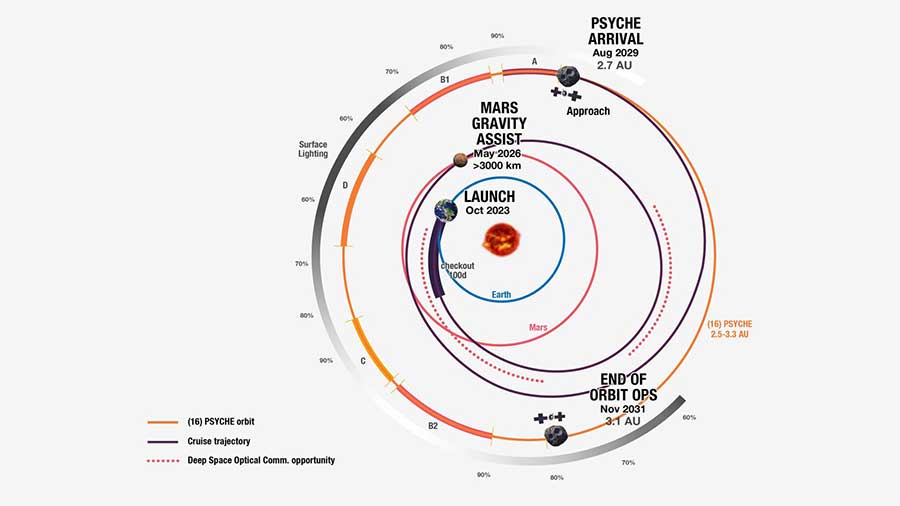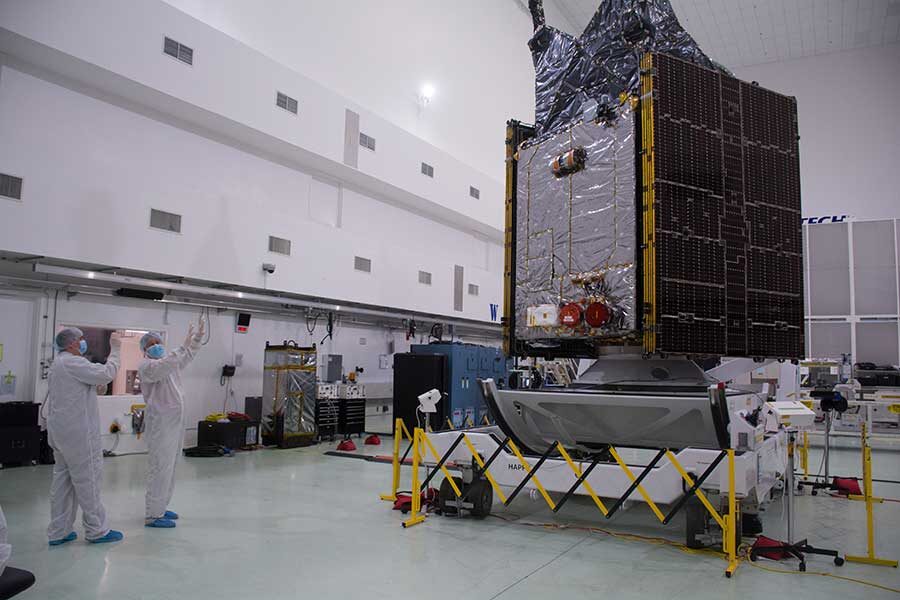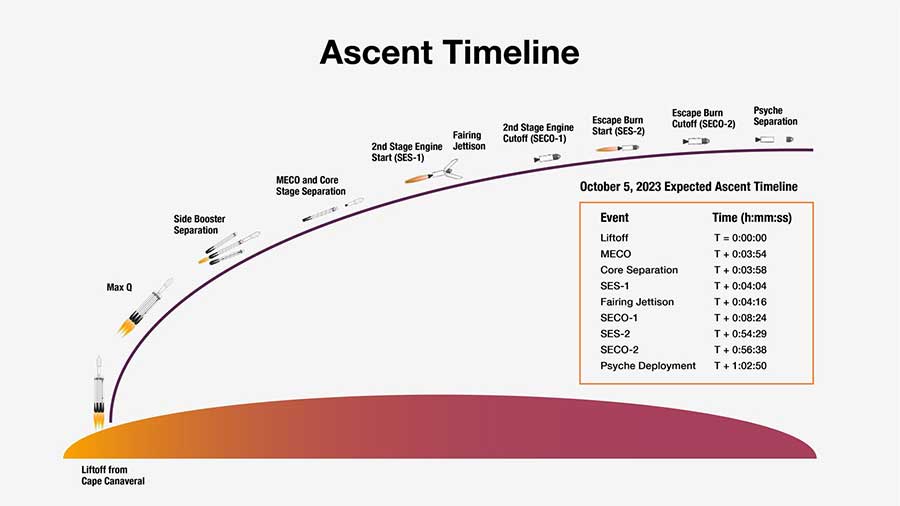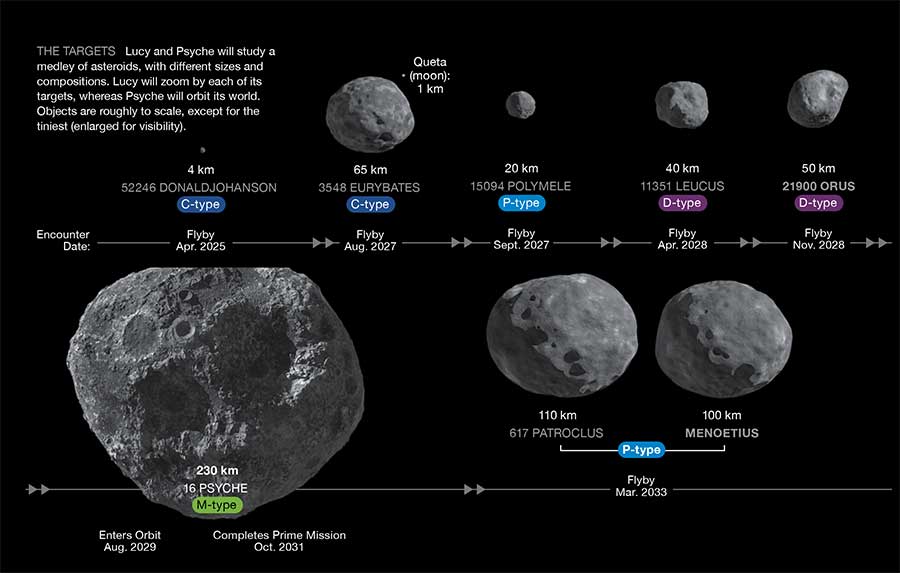From - Sky & Telescope,
By - Emily Lakdawalla,
Edite by - Amal Udawatta

NASA / JPL-Caltech
NASA’s newest mission is bound for the metallic asteroid of the same name, a metal-rich world that offers an insider’s view of planet formation.
With solar panels the size of a singles tennis court, Psyche the spacecraft will use the tiny but constant push from ion engines to spiral outward from the Sun, flying past Mars in spring 2026 and arriving into orbit at asteroid 16 Psyche in August 2029.
Why 16 Psyche? Because it’s metal, or at least, metal-rich. Its unusual spectral properties hint at exposed metal on the surface, like iron asteroids. The metal might be finely pulverized by eons of asteroid impacts, which could have left behind myriad tiny, spiky, cup-shape craters frozen in the act of spraying outward.
The metal-rich composition suggests that 16 Psyche is made from material that formed near the middle of a larger, primordial body, which had differentiated into an iron core and a rocky mantle. The asteroid thus offers a view of that ancient body’s interior. We can’t visit Earth’s core, but we might be able to see a planetary core up close when Psyche-the-spacecraft arrives.
The Psyche mission will launch on a Falcon Heavy rocket from Kennedy Space Center. The launch period spans 20 days, from October 5th to 20th. On each day, there is one instantaneous launch window, meaning that if the launch is scrubbed (canceled), the next possible launch window is the following day. The October 5th opportunity is at 10:34 EDT / 14:34 UT. You can find launch times for other days at this website.

Kirby Kahler
The main engine and second stage will put Psyche into Earth orbit at 8 minutes and 21 seconds after launch. Forty-eight minutes later, the second stage will briefly fire again, taking Psyche out of Earth orbit. Then, about an hour after launch, the spacecraft will separate from the second stage and deploy its gigantic solar panels, readying its solar-electric propulsion system.

NASA / JPL-Caltech
To follow events live, go to NASA+, NASA.gov/live, or YouTube.com/NASA. These all provide a commentated feed of launch events. If you’d rather just listen to mission audio, a clean feed without commentary will be broadcast on the NASA TV Media Channel.
There’s a cool engineering experiment riding along with Psyche: The Deep Space Optical Communications (DSOC) experiment, which will test laser communication between Earth and a deep-space mission. So far, this technology has been used only as far away as the Moon, and a successful demonstration in deep space could allow future science missions to rely on optical communications. Laser communication would dramatically increase the amount of data that could be returned to Earth and/or reduce the amount of power required to transmit that data. DSOC will be tested twice, in November of this year and in October 2025.
The launch is a year later than originally planned. The ensuing changes in trajectory, in turn, have delayed the arrival at 16 Psyche by more than three years. However, there’s a silver lining: The new calendar for Psyche’s prime mission now dovetails nicely with the major events of its fellow small-bodies mission, Lucy.

Lucy targets: NASA GSFC; Psyche: Peter Rubin / NASA / JPL-Caltech / ASU
The match-up reduces complexity for NASA as well as time conflicts for the small asteroid science community. Originally, Psyche’s mission would have overlapped considerably with Lucy’s first set of Jupiter Trojan encounters. The new schedule sees the entire prime mission taking place while Lucy is quietly cruising between Jupiter’s two Trojan asteroid regions.
Psyche’s prime mission is planned to last 26 months, long enough to perform surveys of the asteroid at multiple altitudes, much as the Dawn mission surveyed Vesta and Ceres.
Comments
Post a Comment